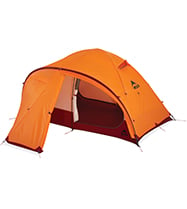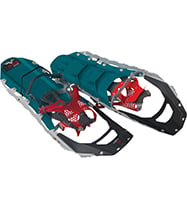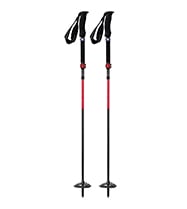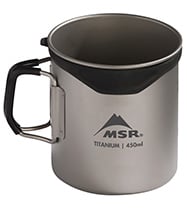7 Winter Backpacking Tips to Get You Started
New to the idea of extending your backpacking season into winter? Fear not–it doesn’t need to be an epic winter sufferfest. For your first trip, try staying close to the car in case things go sideways and you’ll quickly learn what works and what doesn’t with minimal consequences. Here are some other helpful tips to get your winter backpacking started on the right foot:
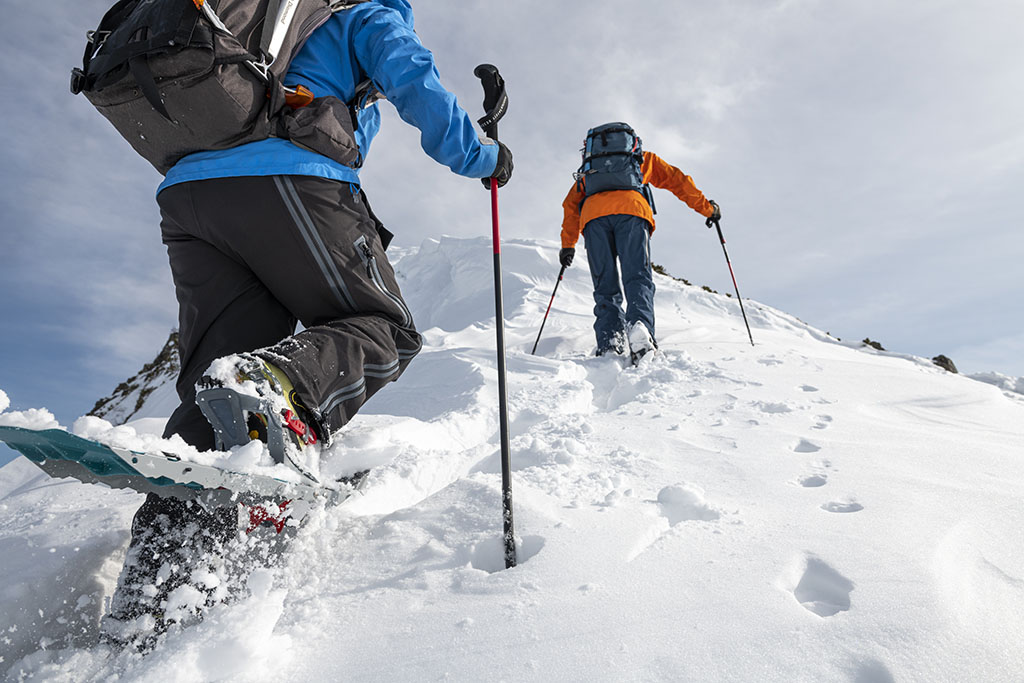
1. Learn Safe Snow Travel
First and foremost, it’s important to realize that avalanches can happen anywhere there is sufficient snowpack and a steep enough slope. If your winter backpack entails travelling in mountainous terrain–be it New Hampshire or Colorado–education is key to doing so with confidence. Taking an avalanche course is an easy way to get the tools you need to travel safe in the mountains. The fundamental focus of these courses is on teaching you how to read the snowpack, weather and terrain, then apply that info to find the safest possible paths through the mountains. Skills gained in these courses include snowpack evaluation, route finding and use of avalanche beacons, probes, and shovels for recovery and snowpack assessment. Perhaps most importantly, the human factors involved in group decision-making are covered, as they often indicate key turning points in the events leading up to most human-triggered avalanches. An added plus is meeting other folks interested in winter backcountry exploration and the possibility of finding someone to explore with.
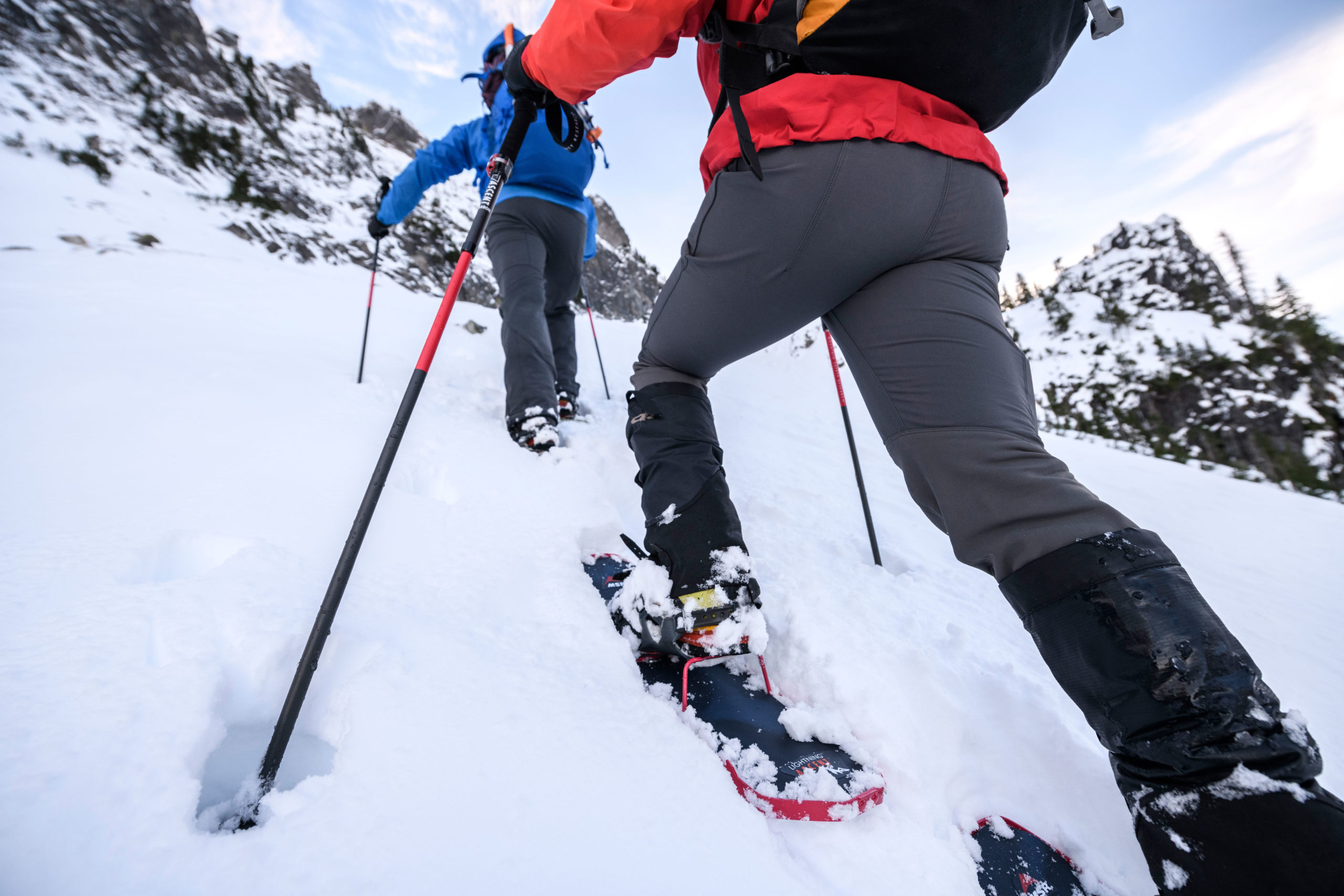
2. Get the Right Footwear
Winter backpacking footwear will vary according to your interest and the backcountry conditions. Well- engineered boots are a fundamental feature of a winter backpacker’s kit. These can be supplemented with gaiters, which aid in warmth and dryness in deep snow. Another helpful addition to boots are traction devices which range from simple rubber or metal grip systems which strap over the soles, to crampons with more rigid structure and spikes. If your winter backpacking trip is likely to include a significant amount of deep snow, high performance equipment such as snowshoes or skis make travel more efficient and pleasant. MSR Lightning Ascent snowshoes are just such a tool. They’re engineered with lightweight yet durable materials and provide terrain adaptation. They also offer features such as Ergo™ Televators which reduce fatigue and increase traction on steep terrain.
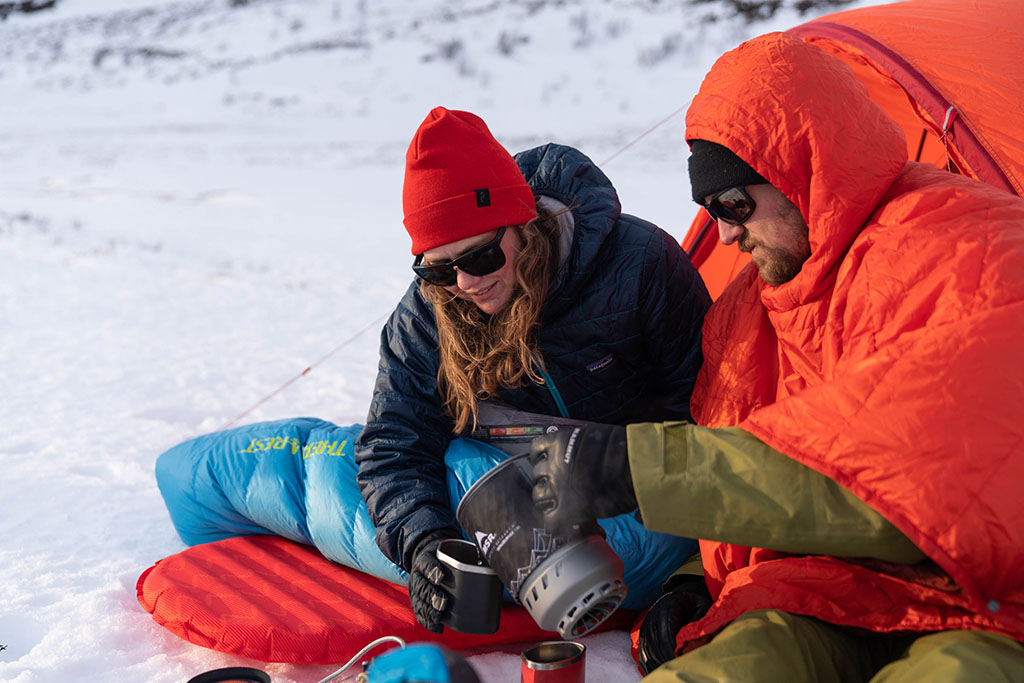
3. Adjust Layering System
Building on your three-season clothing layers, a well-tuned winter system incorporates at least one extra layer with an emphasis on reducing sweat. Two materials which make a big difference are wool and down. An alternative insulator for our vegan friends is Climashield Apex. Wool is a high-performance layer that is lightweight, and combines heat-retaining, water-resistant, and odor-repelling features. A down layer makes a significant difference in warmth when the temperatures plummet or when you are less physically active. It is particularly important for overall warmth to keep the down layer dry, because wet down loses its loft–the one thing that makes down so warm. You can prevent sweat saturation and maximize performance by incorporating it only when the temperatures are particularly low or when you are not exerting a lot of energy.
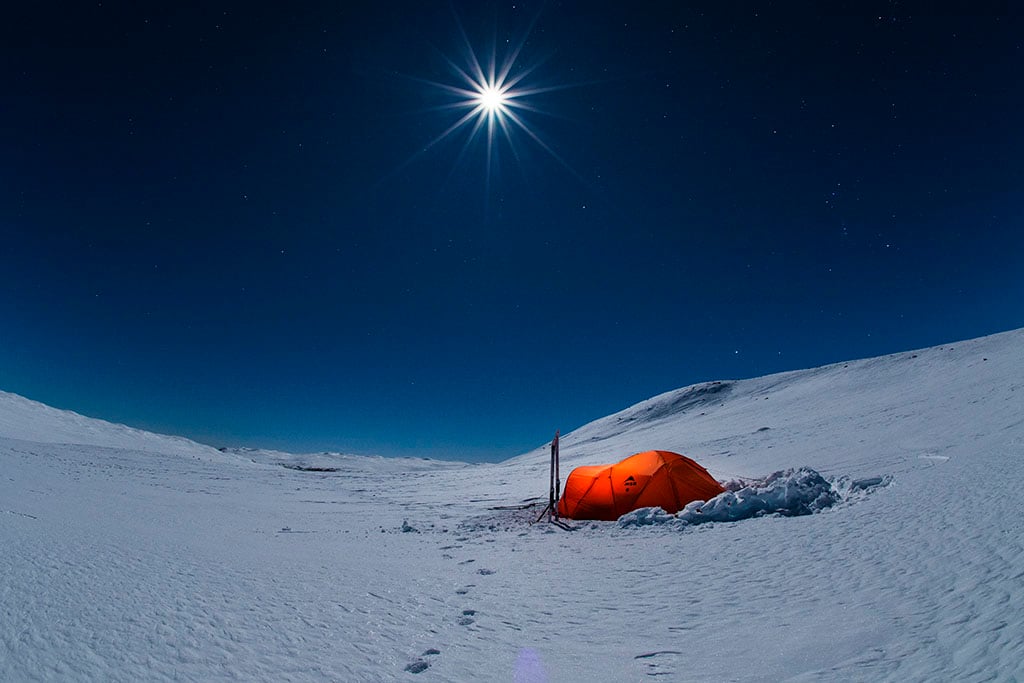
4. Be Selective about Campsites
The quality of a shelter, as well as where and how it is set up, impacts the quality of rest when winter backpacking. This ‘Best 4-Season and Mountaineering tents by MSR’ post breaks down the performance and features of various shelter options. In addition be strategic about site placement, taking advantage of natural features to protect from wind, moisture, and exposure. In keeping with the ultra-light backpacking edict of multi-purpose gear, an avy shovel can be used to dig-in for protection from wind, and to dig-out from new snow to keep your shelter properly ventilated. A two-wall tent (fly and tent body) is the best option for reducing condensation, which is key to sleeping warm and dry.
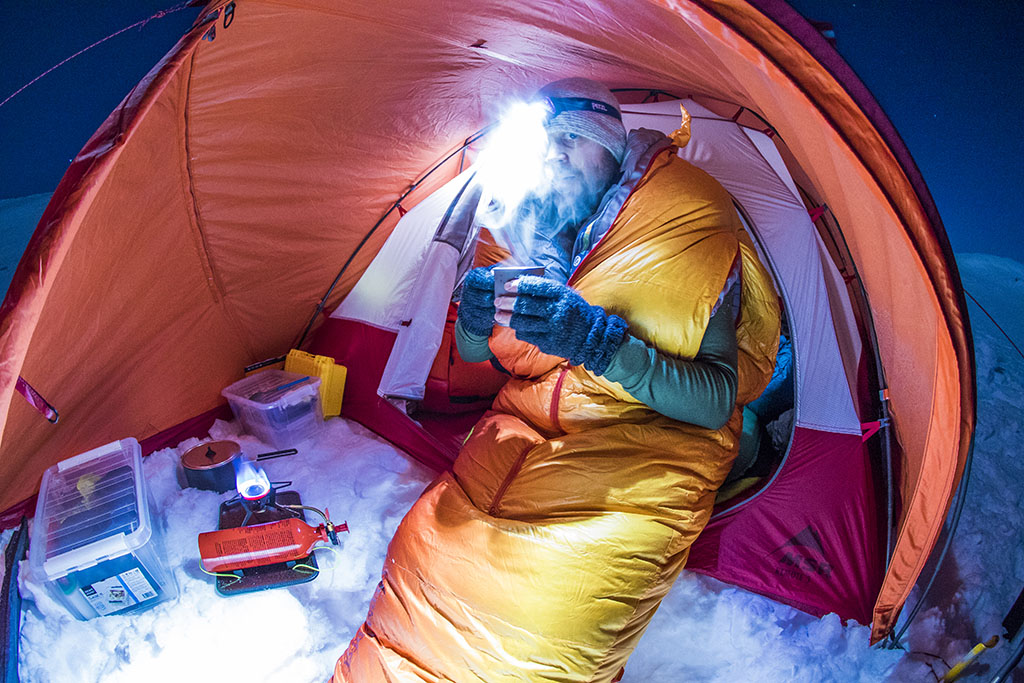
5. Maximize Dinner
Another tip to staying warm when winter backpacking is to bulk up the calories at dinner. This meal will see you through the longest stretch without caloric intake, so load up on a mix of fast- and slow-burners.
Whole grains and fiber are slow-burning energy sources that will last through the night to keep you warm. Seasonings like garlic and turmeric also offer warming properties. Oil is another great addition, whether it’s coconut oil or a stick of butter; both add flavor and have a high calorie to weight ratio. Sprinkling a handful of nuts over your meal adds crunch, calories, and nutrients, too. For example, peanuts’ fatty acids and magnesium content add energy and help regulate body temperatures. My final and favorite dinner tip is to finish off with some chocolate, preferably 75% or higher cocoa to promote increased blood flow and generate heat.
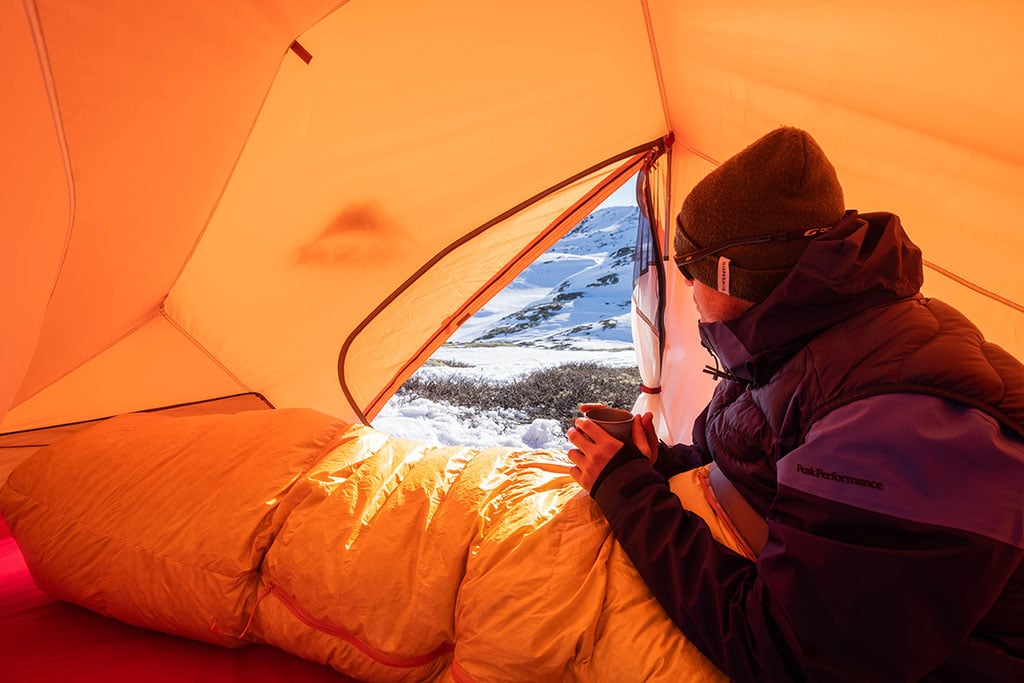
6. The ‘Sleeping with your Clothes’ Debate
Taking off daytime clothing layers to sleep promotes skin health, circulation, and overall cleanliness, but sleeping with a fresh baselayer is recommended to help boost warmth and keep your sleeping bag from getting damp. However, putting on cold layers in the morning can be a real drag. There are a number of methods to avoid having to put on freezing clothes in the morning, revolving around where and how to store them overnight. One tip is to sleep with the clothes inside your sleeping bag. Other ideas are to bundle clothing and place it beneath the knees or to elevate the feet, or put them in a Therm-a-Rest Stuff Sack Pillow for added comfort. Another option is to store clothes flattened between layered sleeping pads.
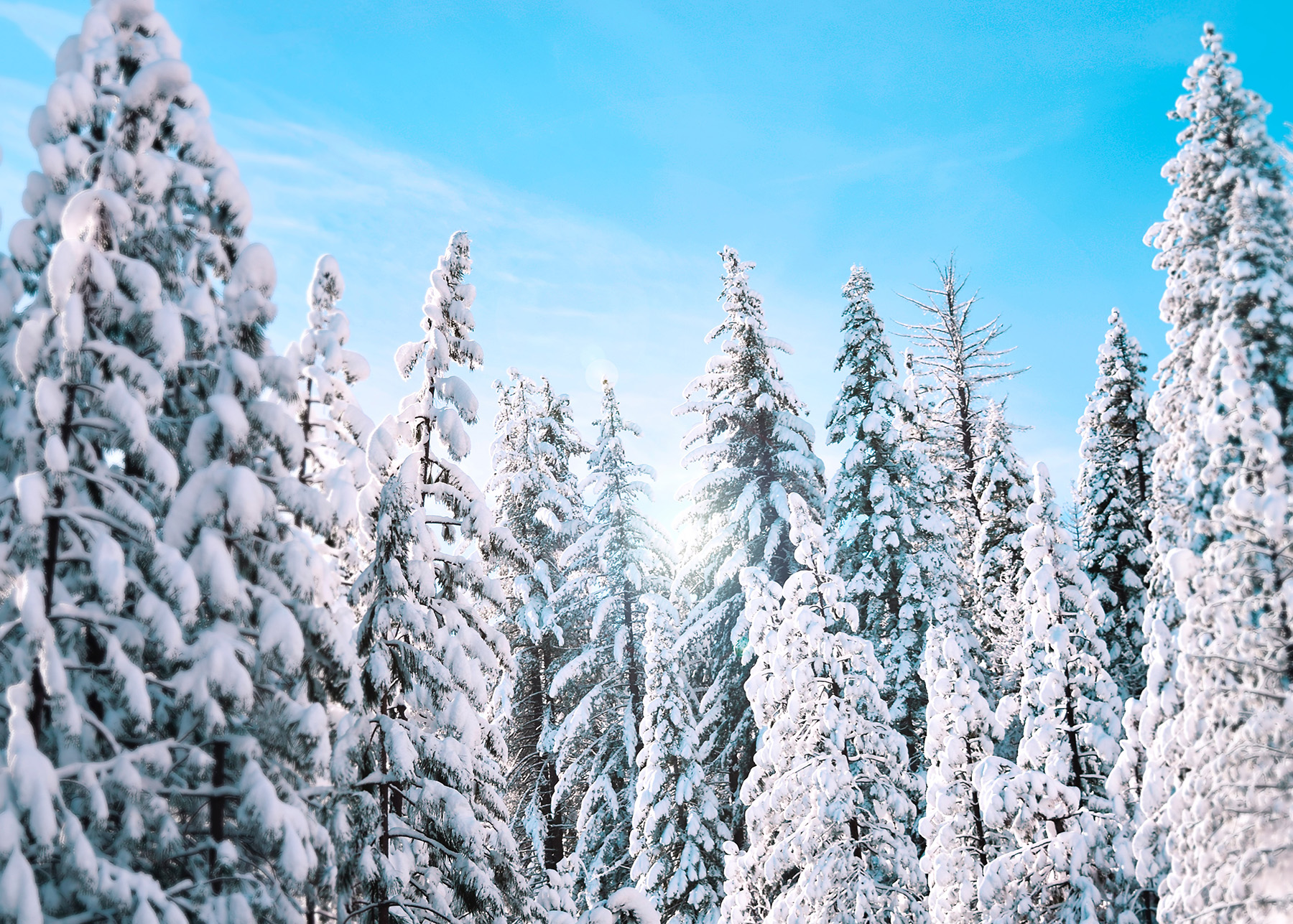
7. Dial-in Your Waste Disposal System
Before heading into the backcountry for a winter backpacking trip, have a plan for proper waste disposal. The Leave No Trace Foundation offers a list of options for winter waste disposal. In the absence of latrines, outhouses or other established options, catholes are the preferred method when below treeline. This hole should always be 6-8 inches below the surface of the soil and more than 200 feet away from water and use areas. In winter backpacking, this means digging through snow and duff before hitting soil and starting to count down. On group excursions or winter base-camping adventures, parties may elect to dig a community latrine. In either case, the shovel you are carrying comes in handy here. If it is not possible to dig a cathole, you can bring one of the various bag or canister systems engineered for these conditions. I find that digging a latrine makes the most sense for basecamping or large parties but while on solo winter backpacking trips, the WAG or Blue bag systems are faster and more convenient.
While snow is a possibility in winter backpacking, cold temperatures and wide temperature swings between daytime and night are probable. Whatever you encounter, these tips should help you consider your own knowledge and experience, what your gear is designed for and how to use it to your best advantage. Whether you’re trying to stay warm in your sleeping bag at night, sweating up a slope, or packing out waste, engineering and refining a system builds the confidence to make your winter backpacking trip as rewarding an experience as it is challenging.
Related Posts:
- Best Winter Camping Gear from MSR
- How to Choose a Winter Tent
- 3 Cold Weather Meals to Help Keep You Warm
 Bethany Hughes, of Her Odyssey, is 14,000 miles into thru-hiking the Americas. This is the first undertaking in a 5-year plan to travel the length of the Americas by non-motorized means, gathering stories along the way and inspiring others to pursue their own audacious dreams.
Bethany Hughes, of Her Odyssey, is 14,000 miles into thru-hiking the Americas. This is the first undertaking in a 5-year plan to travel the length of the Americas by non-motorized means, gathering stories along the way and inspiring others to pursue their own audacious dreams.

